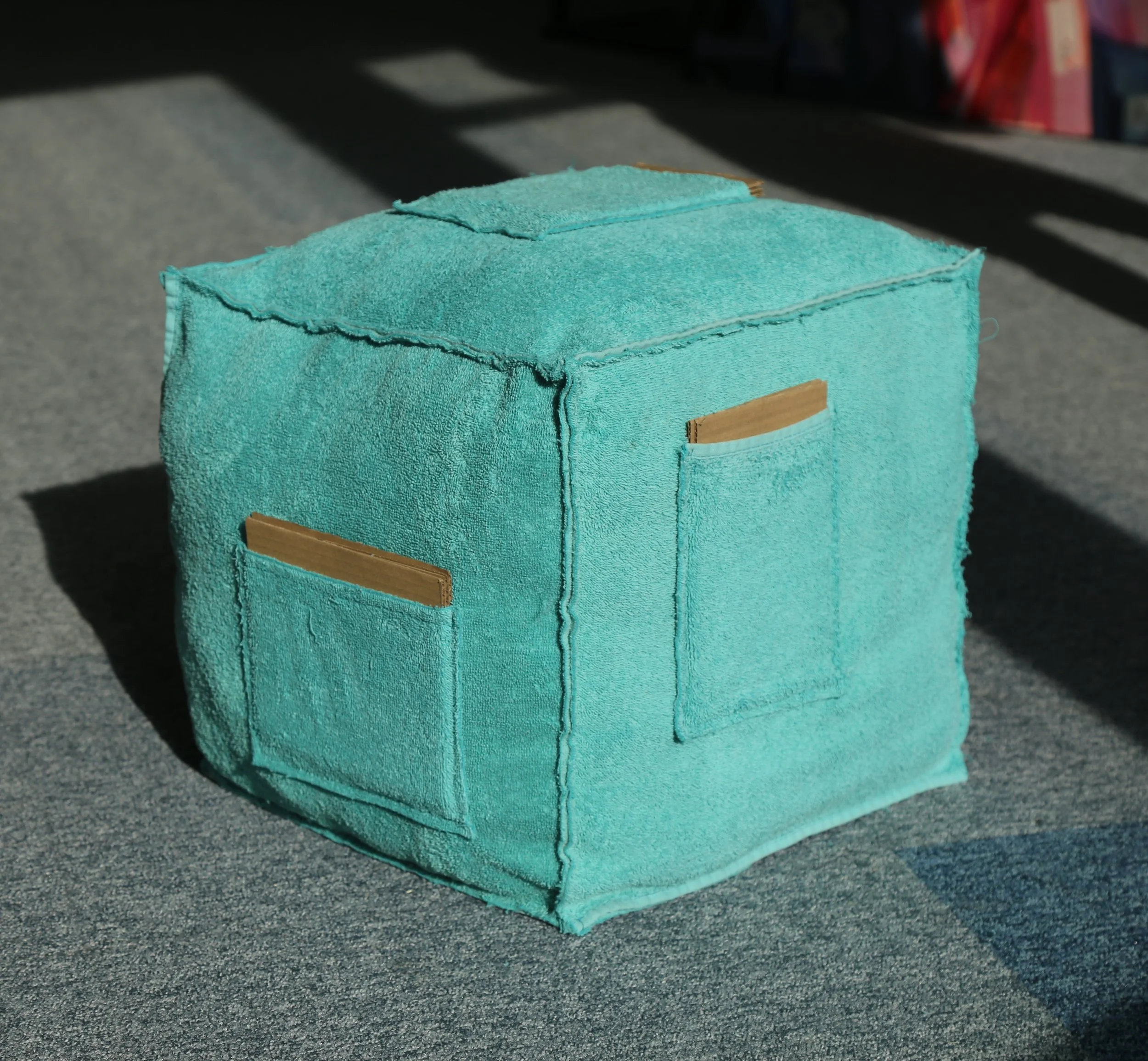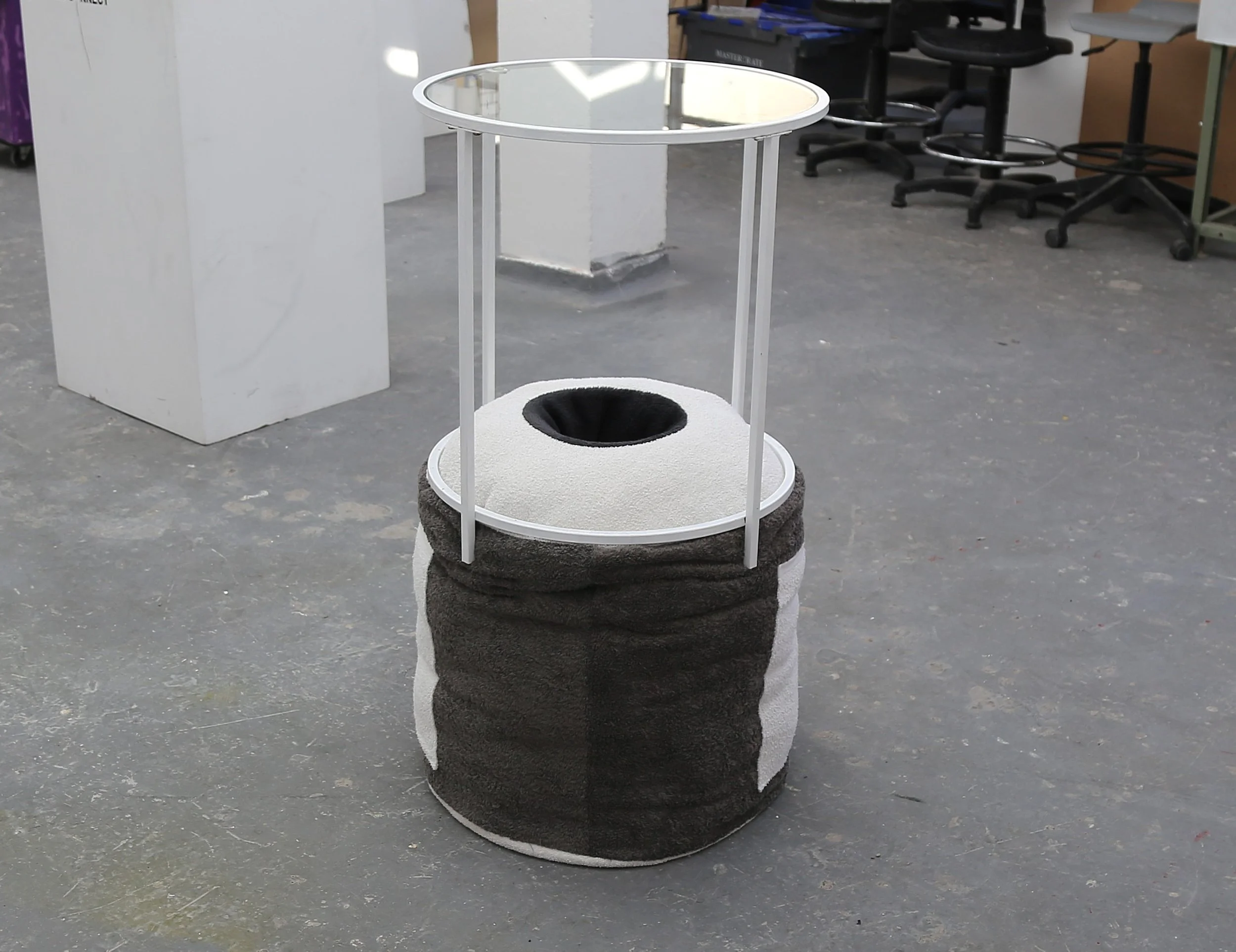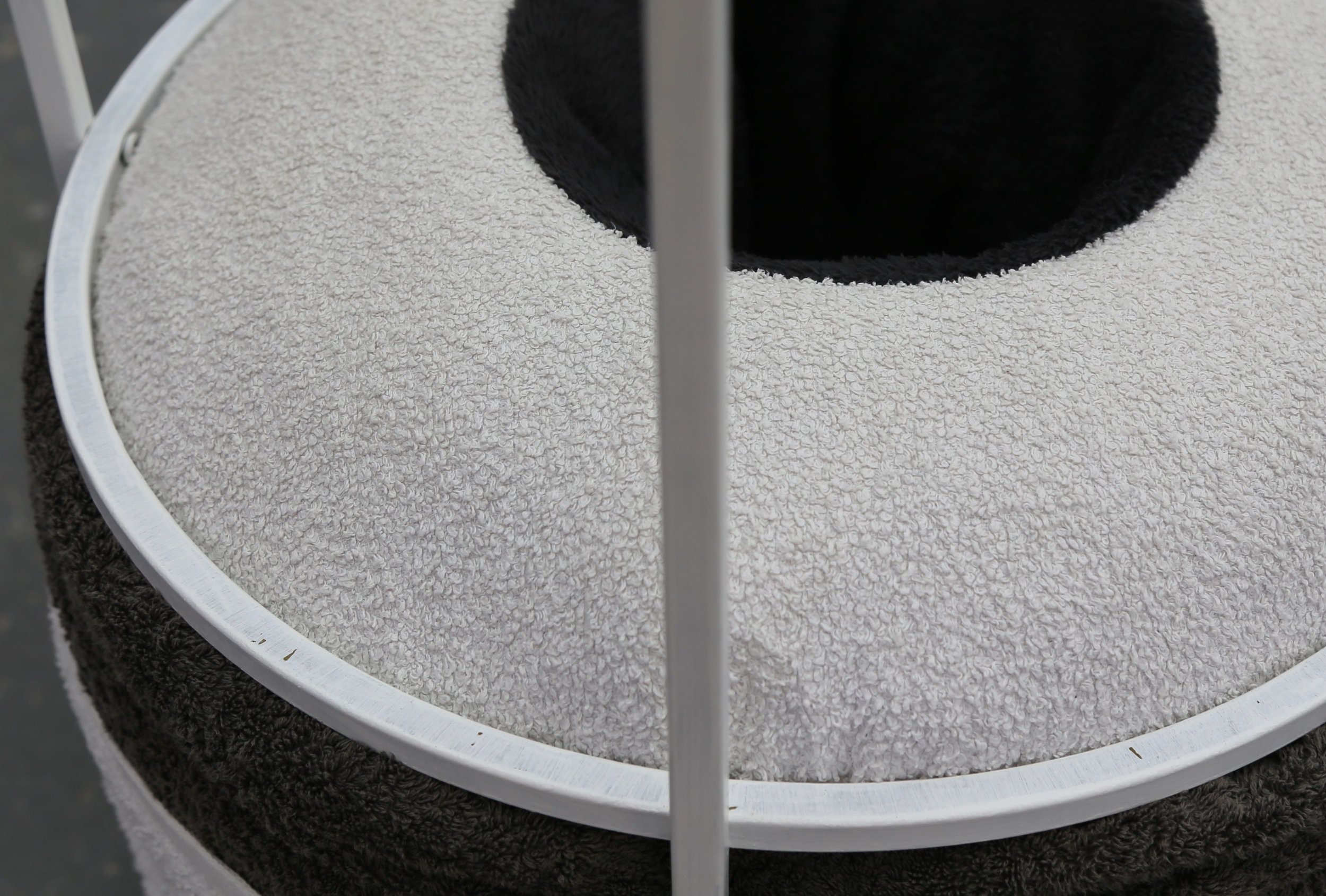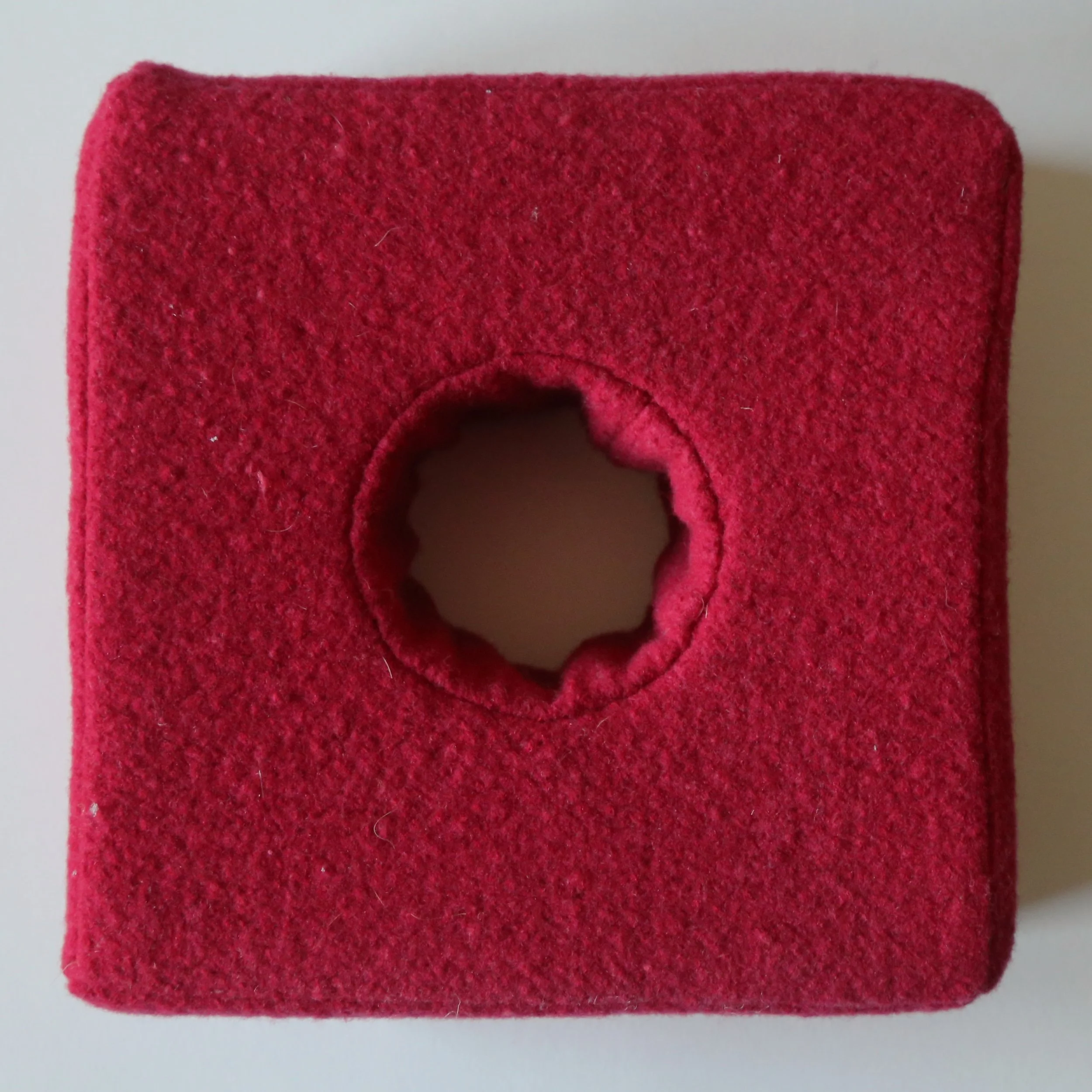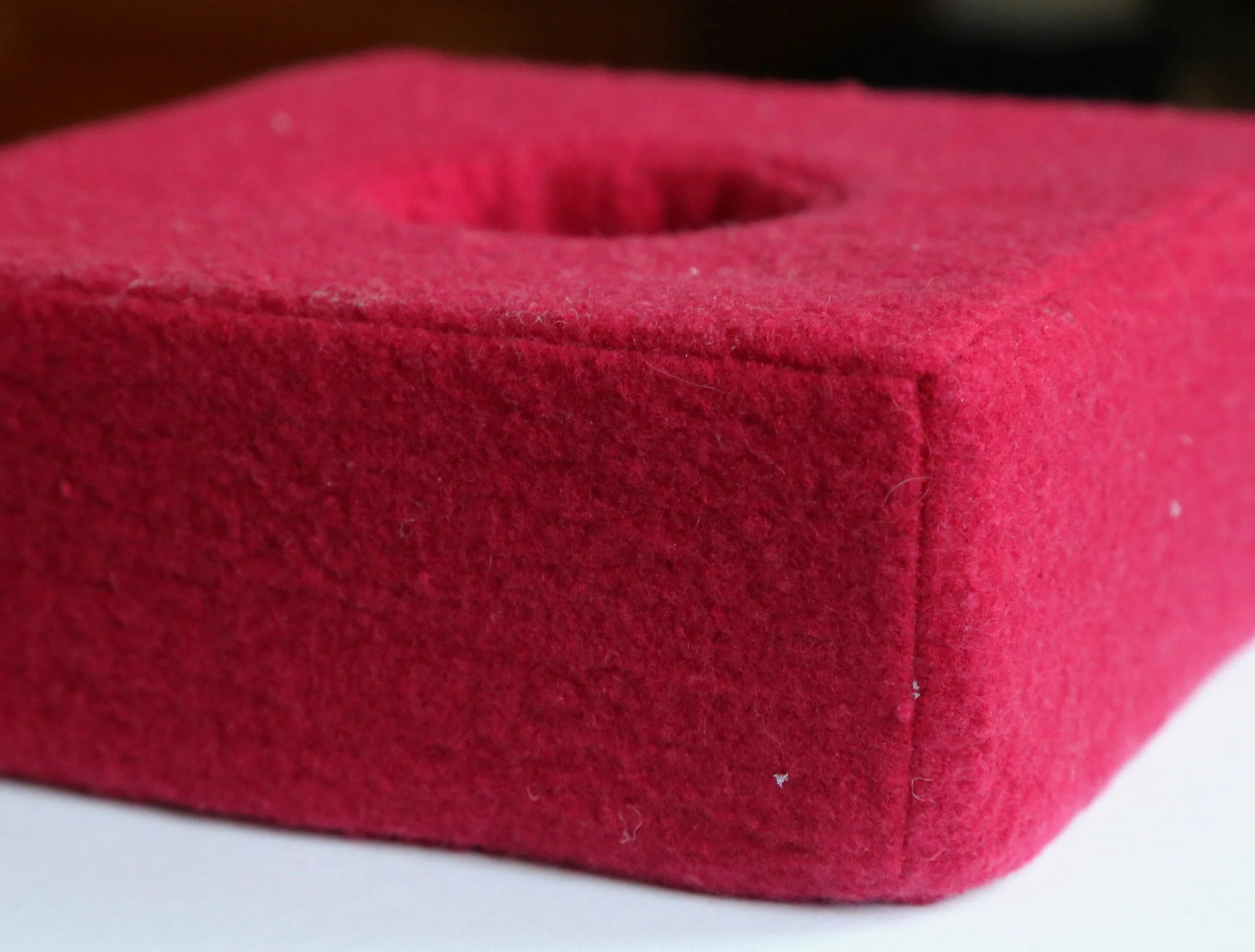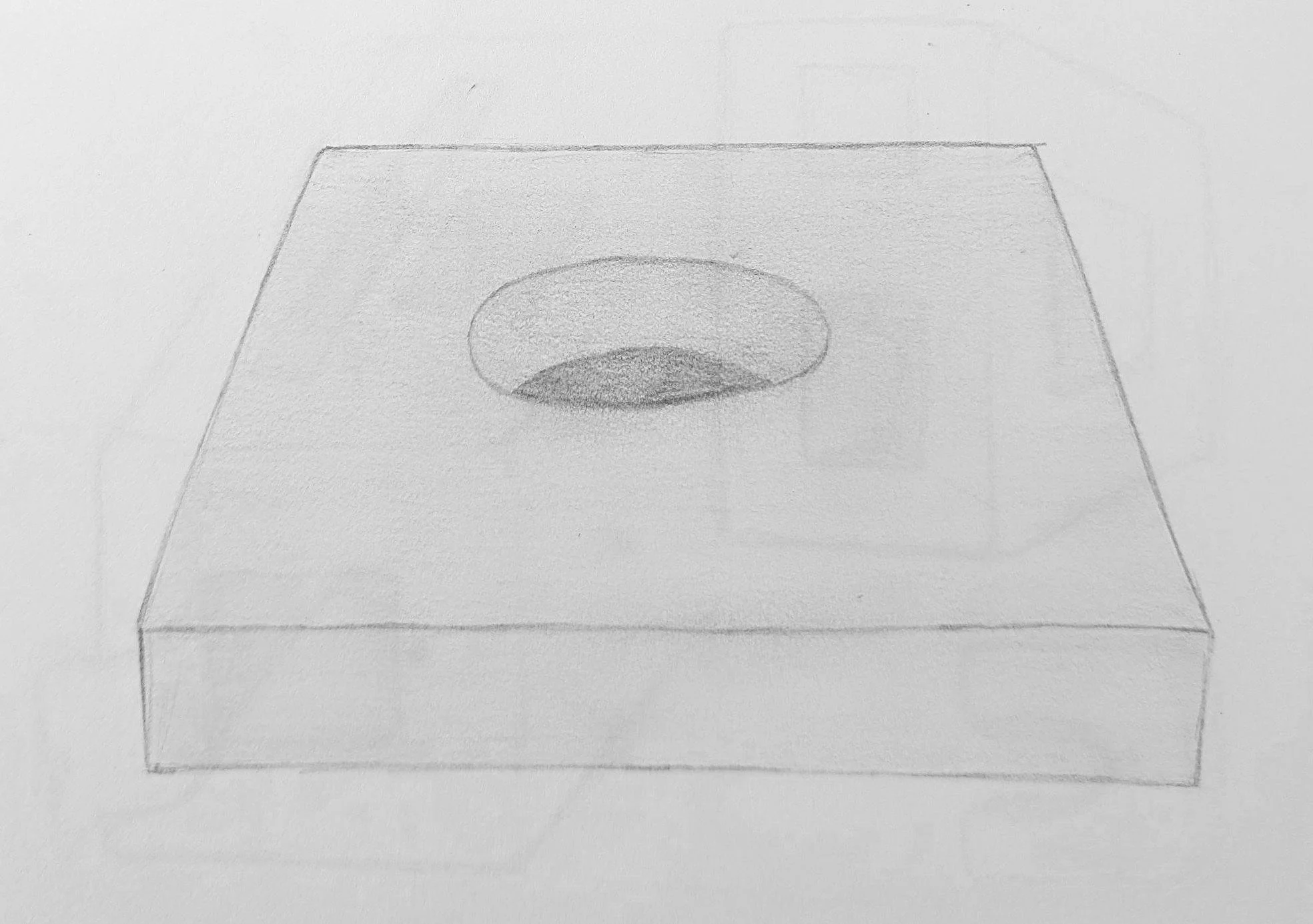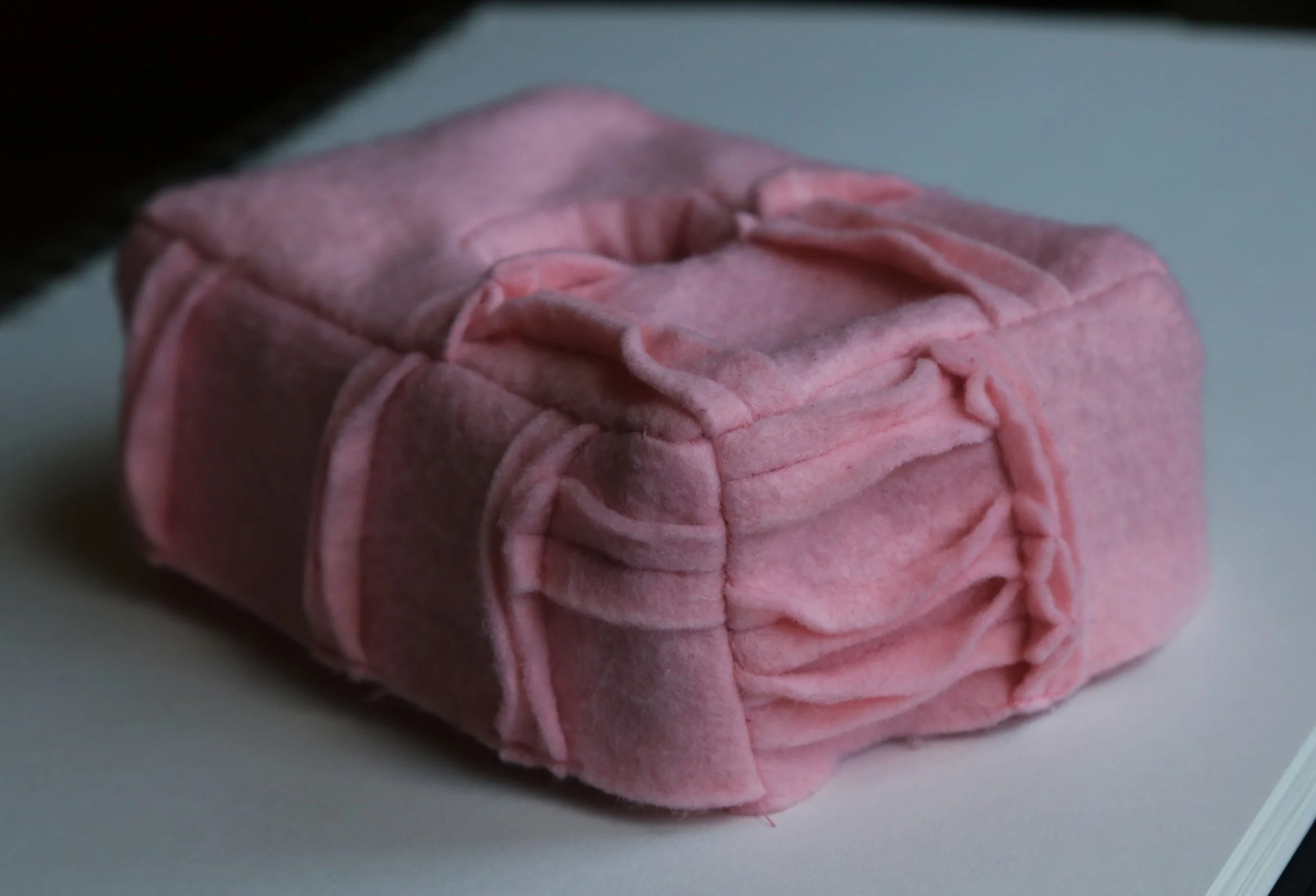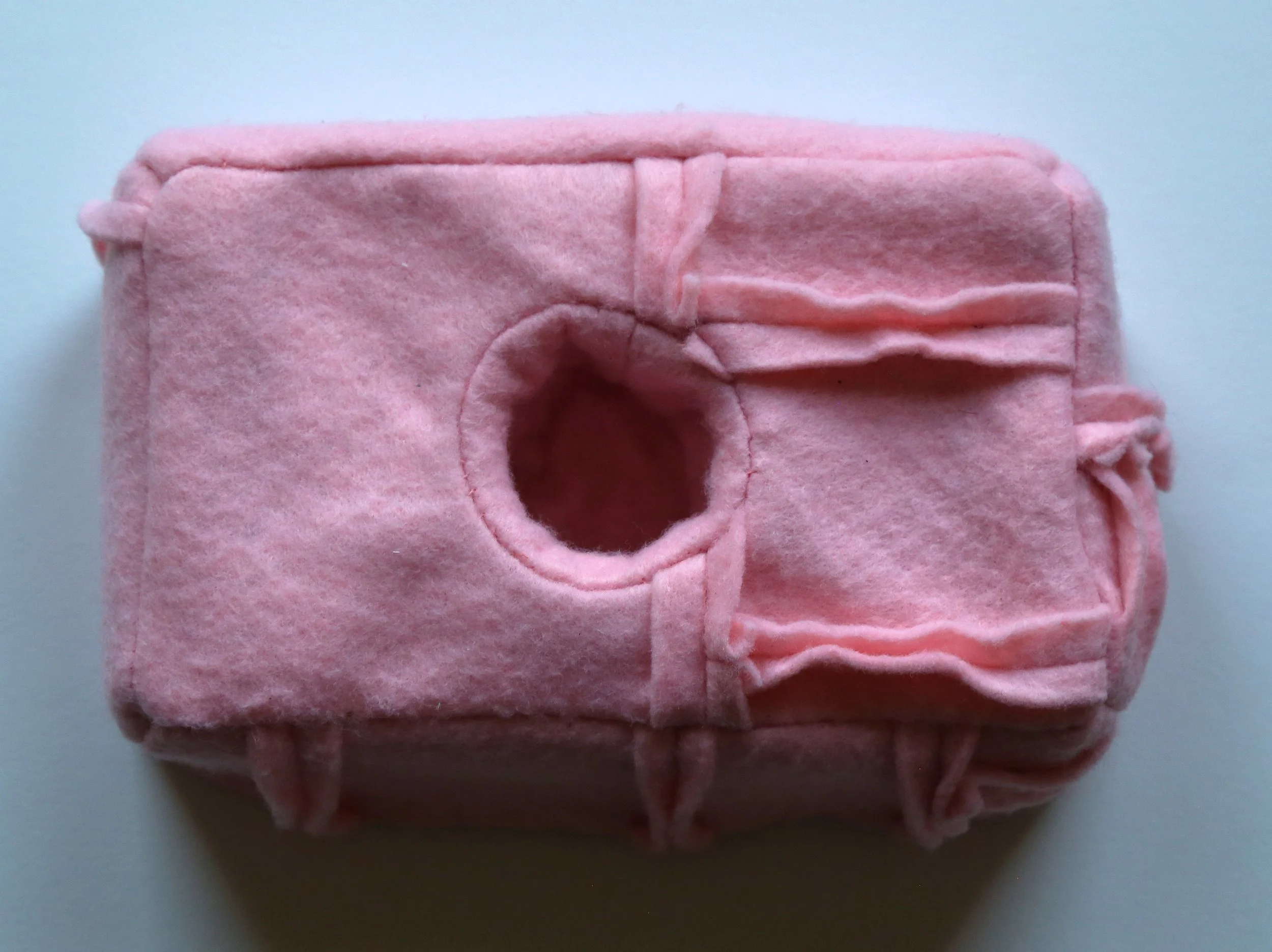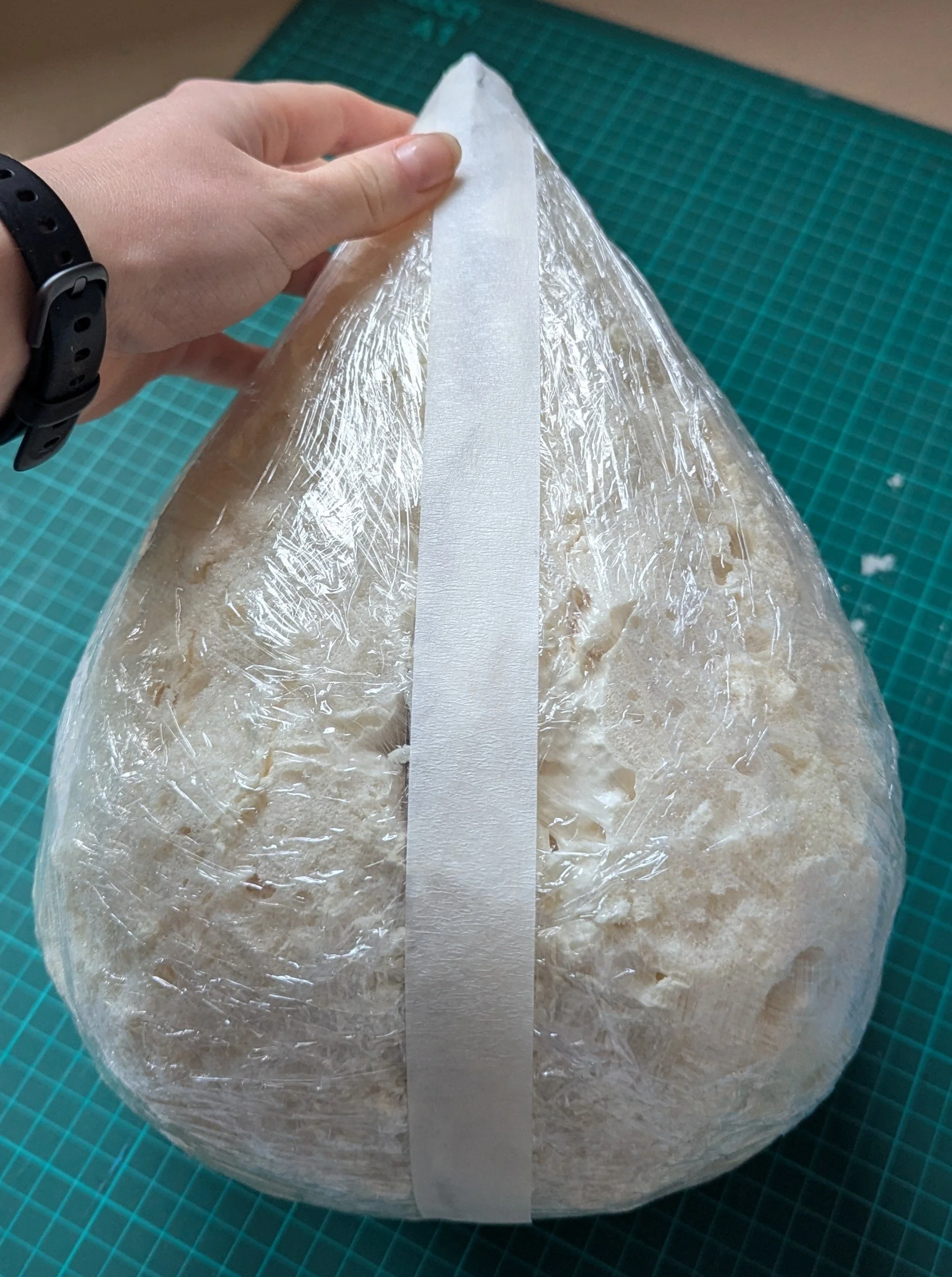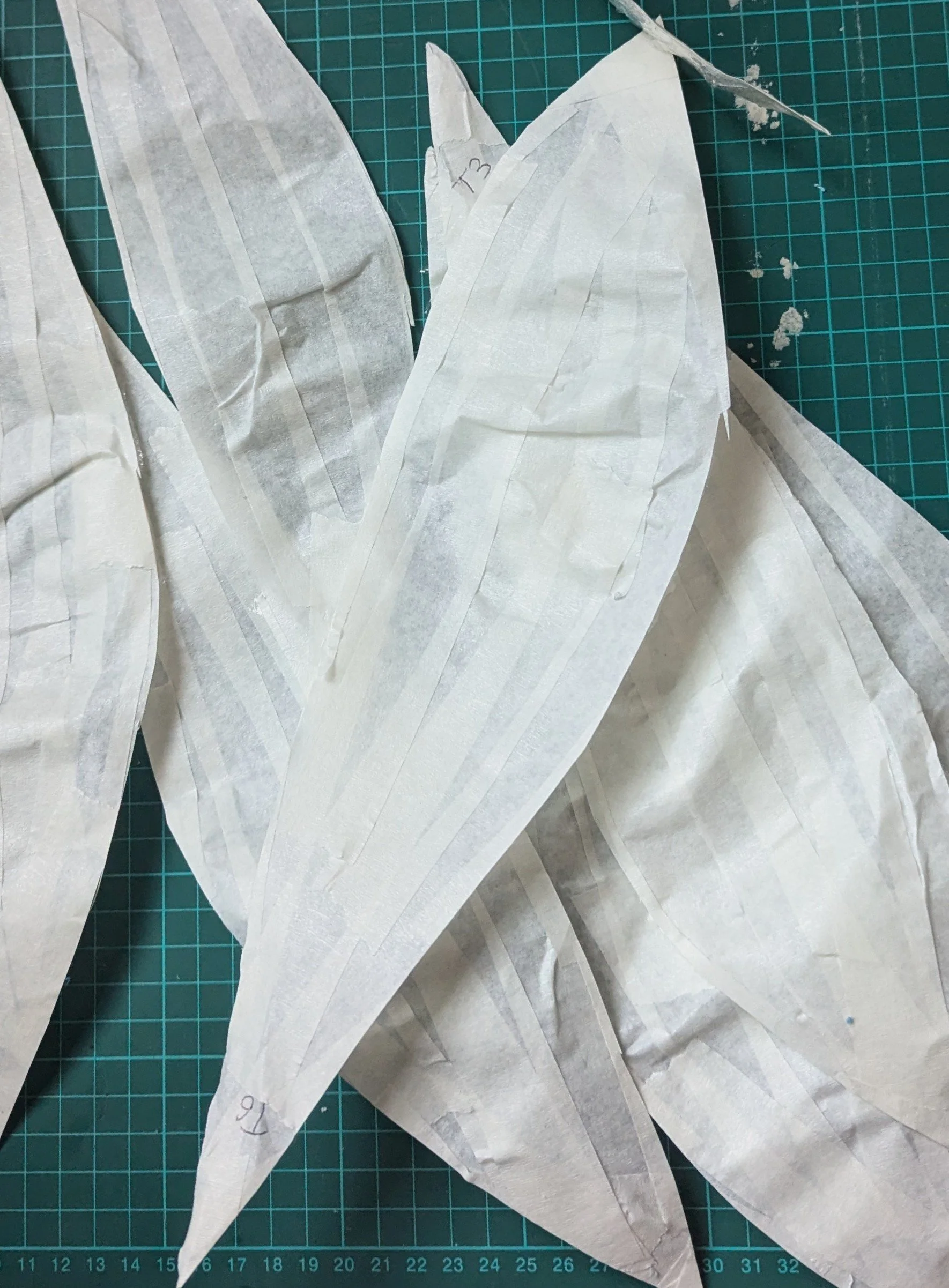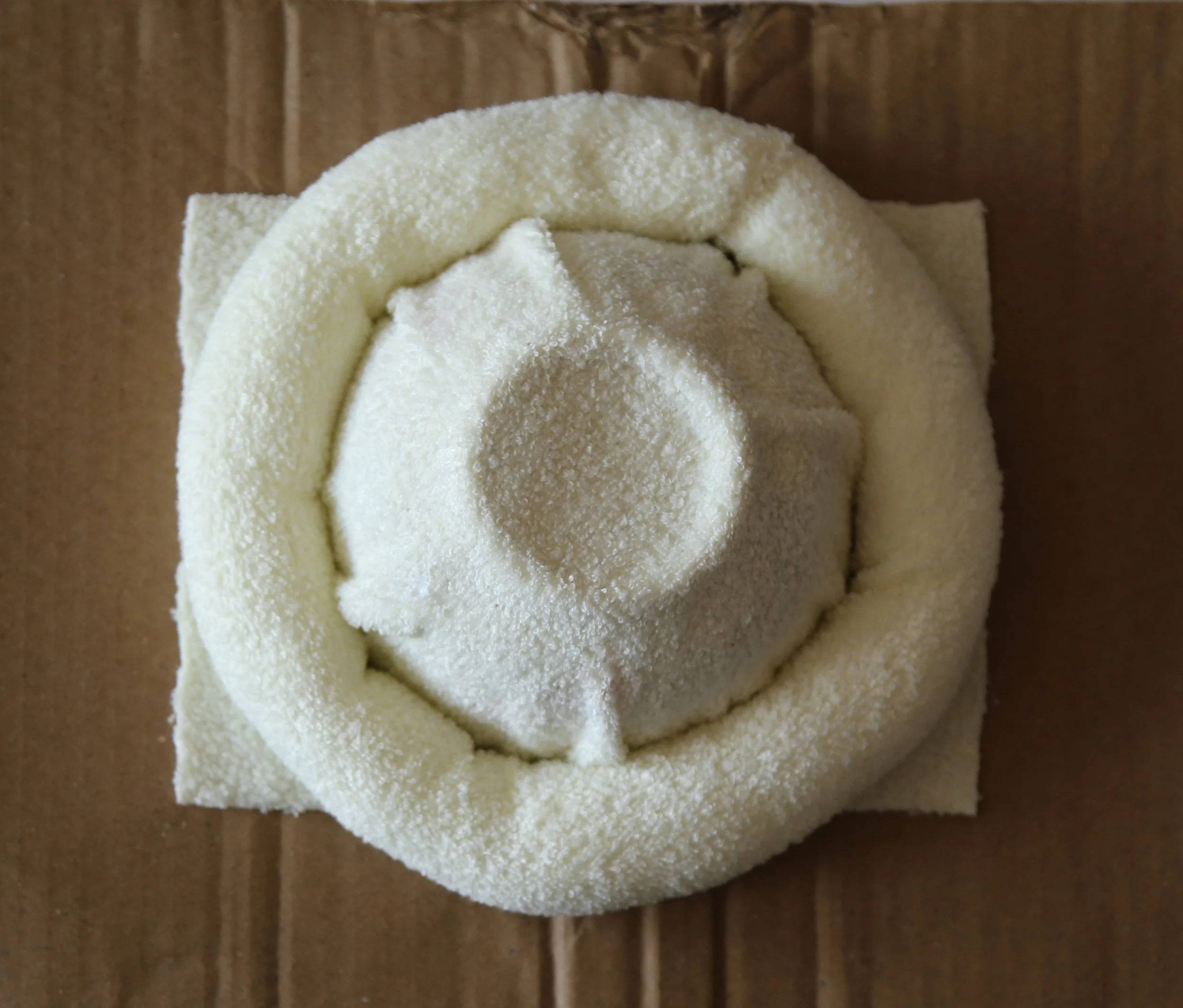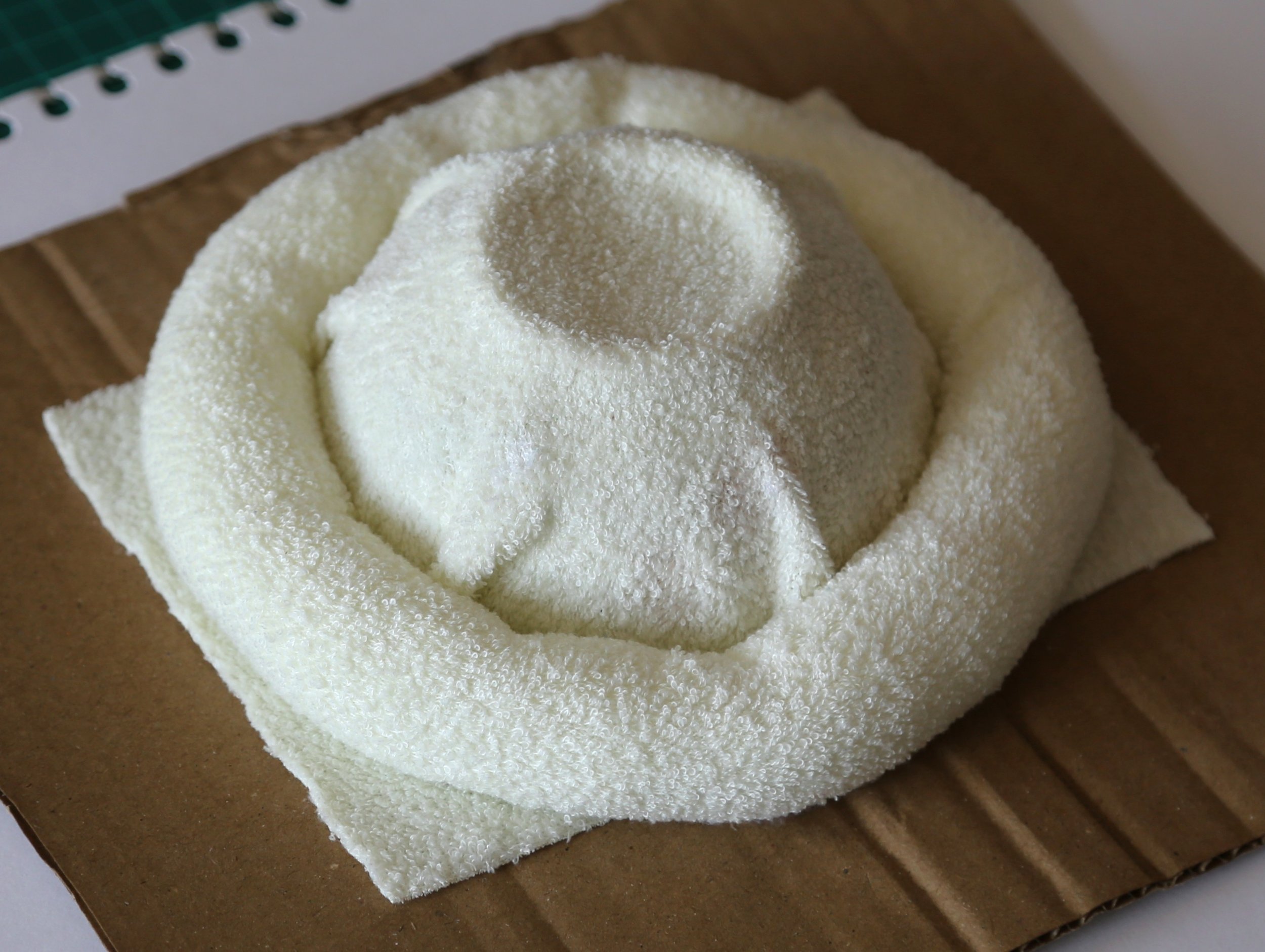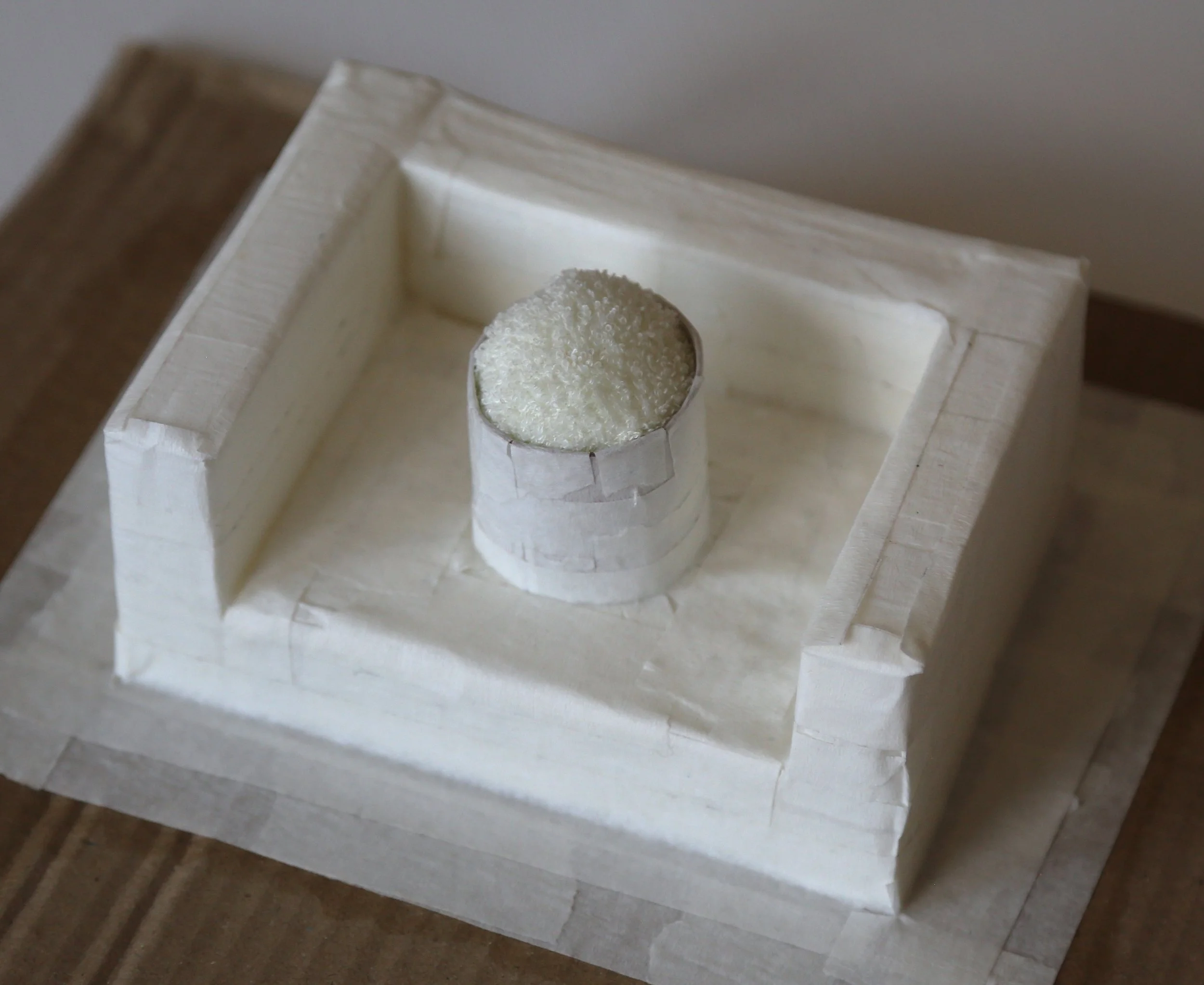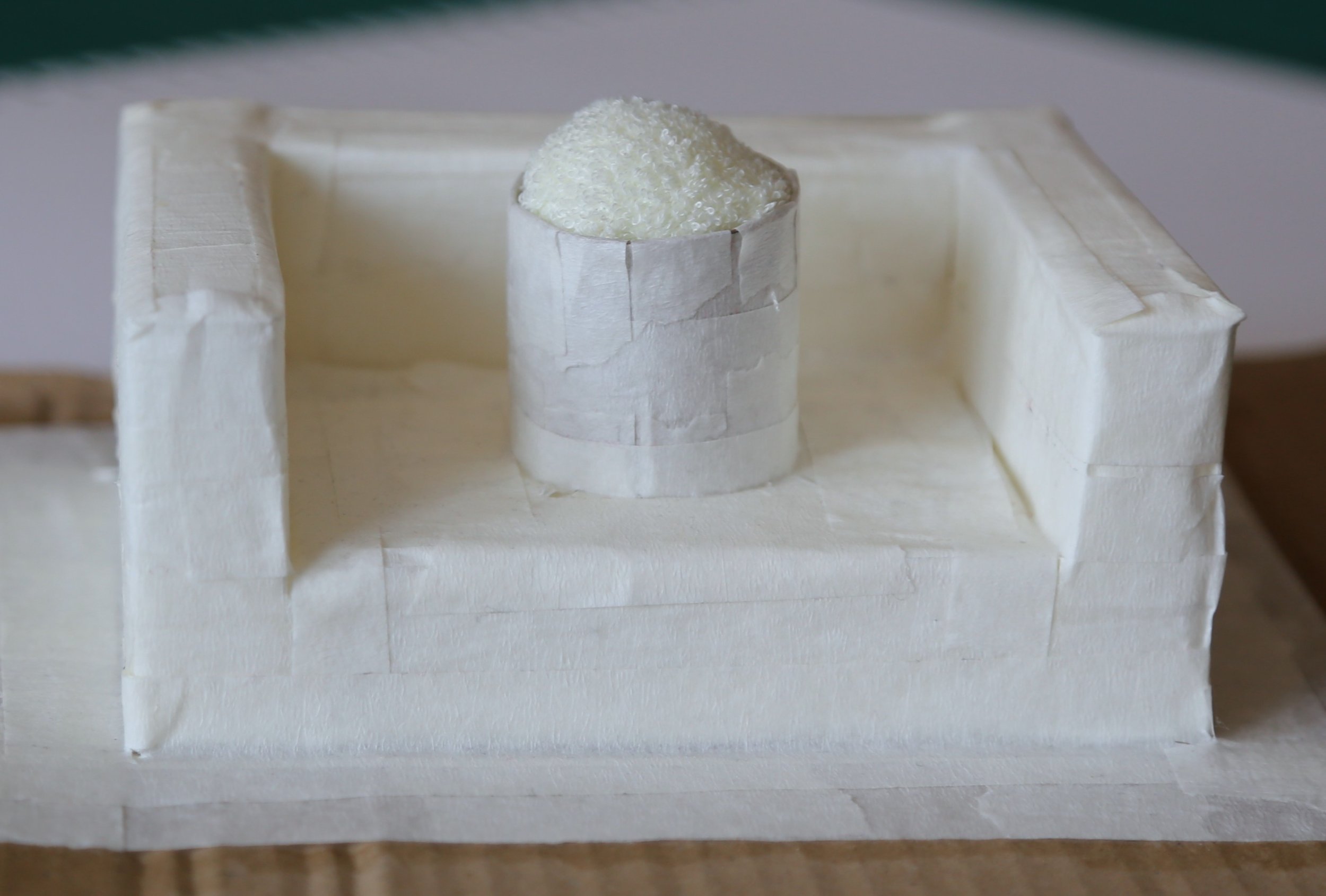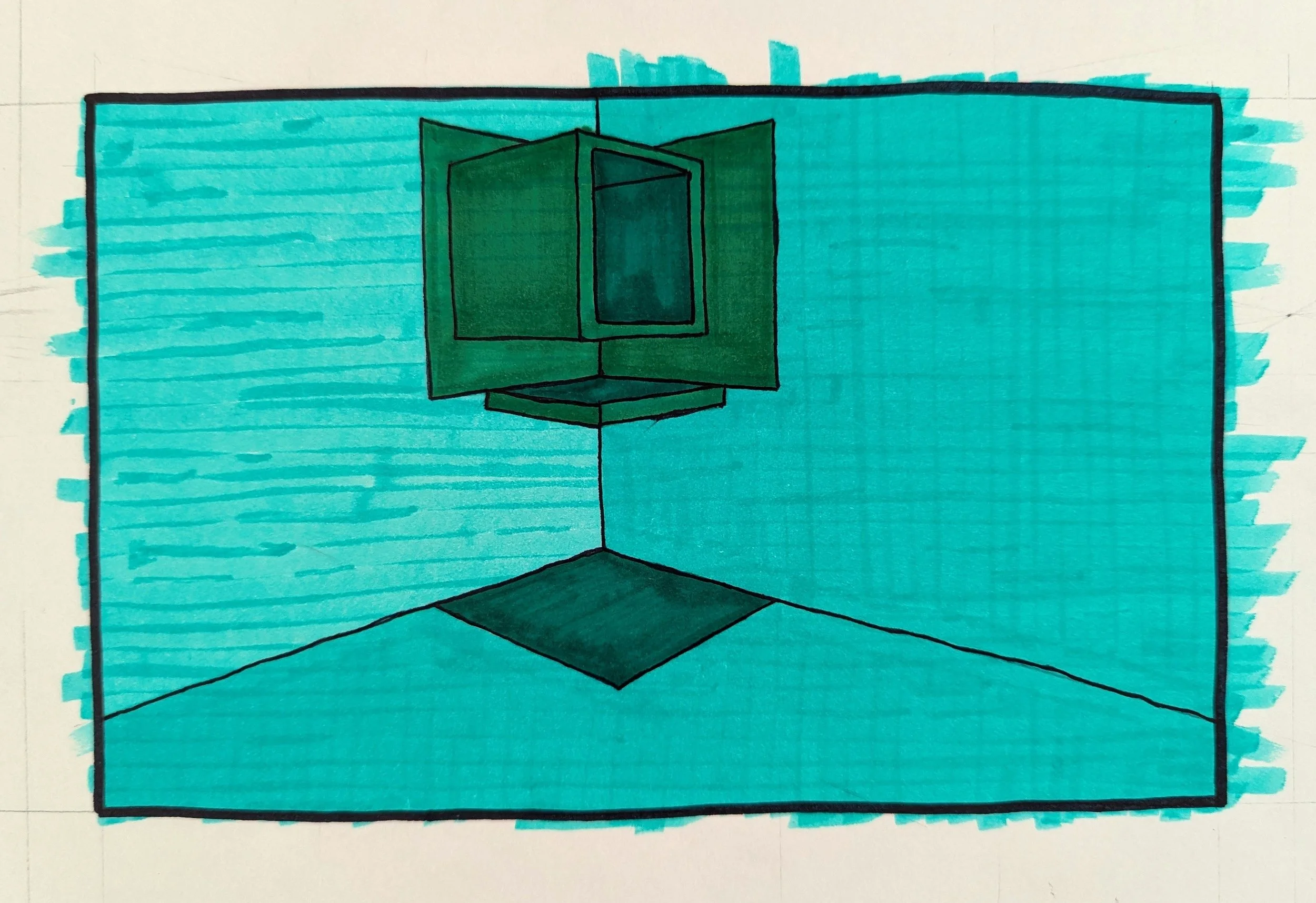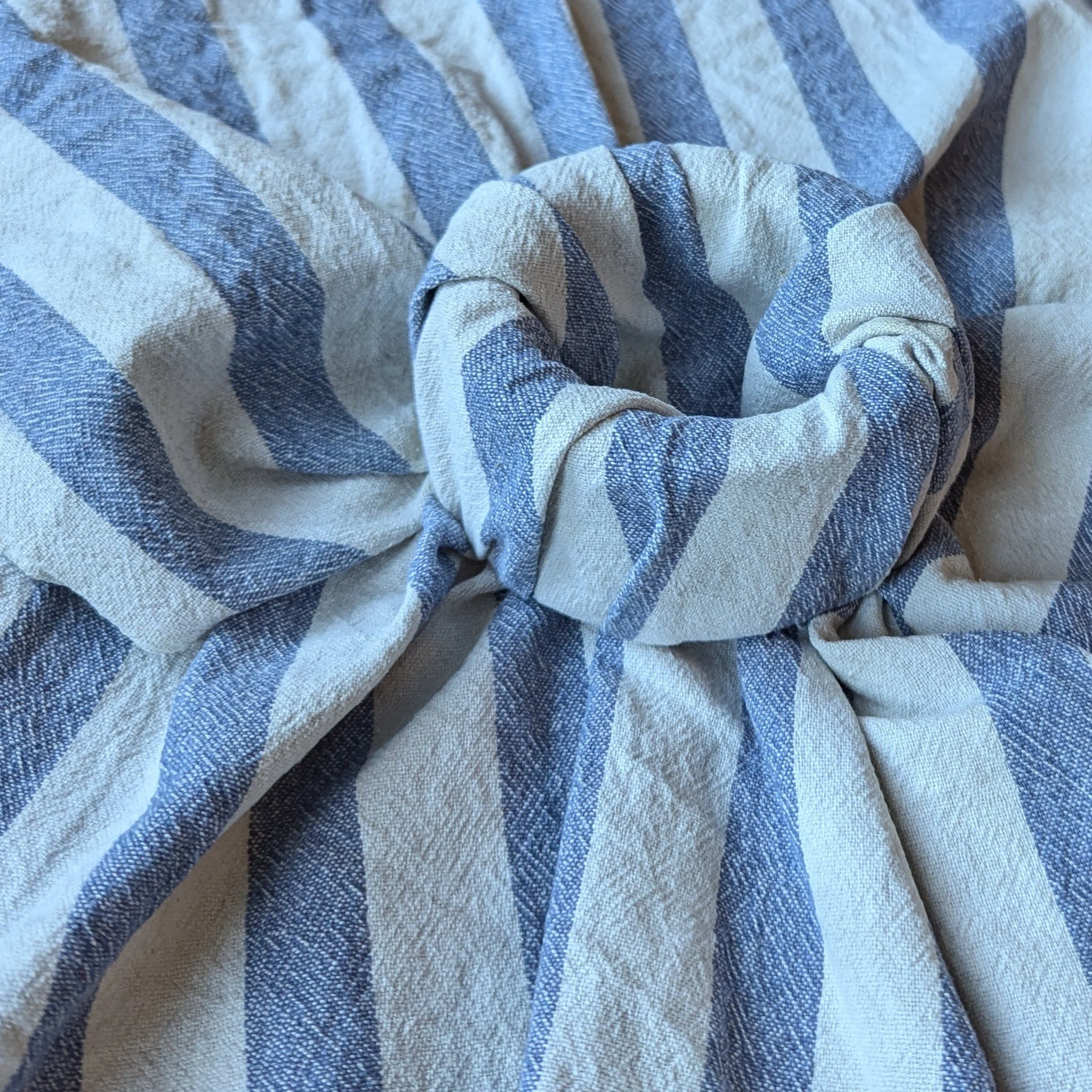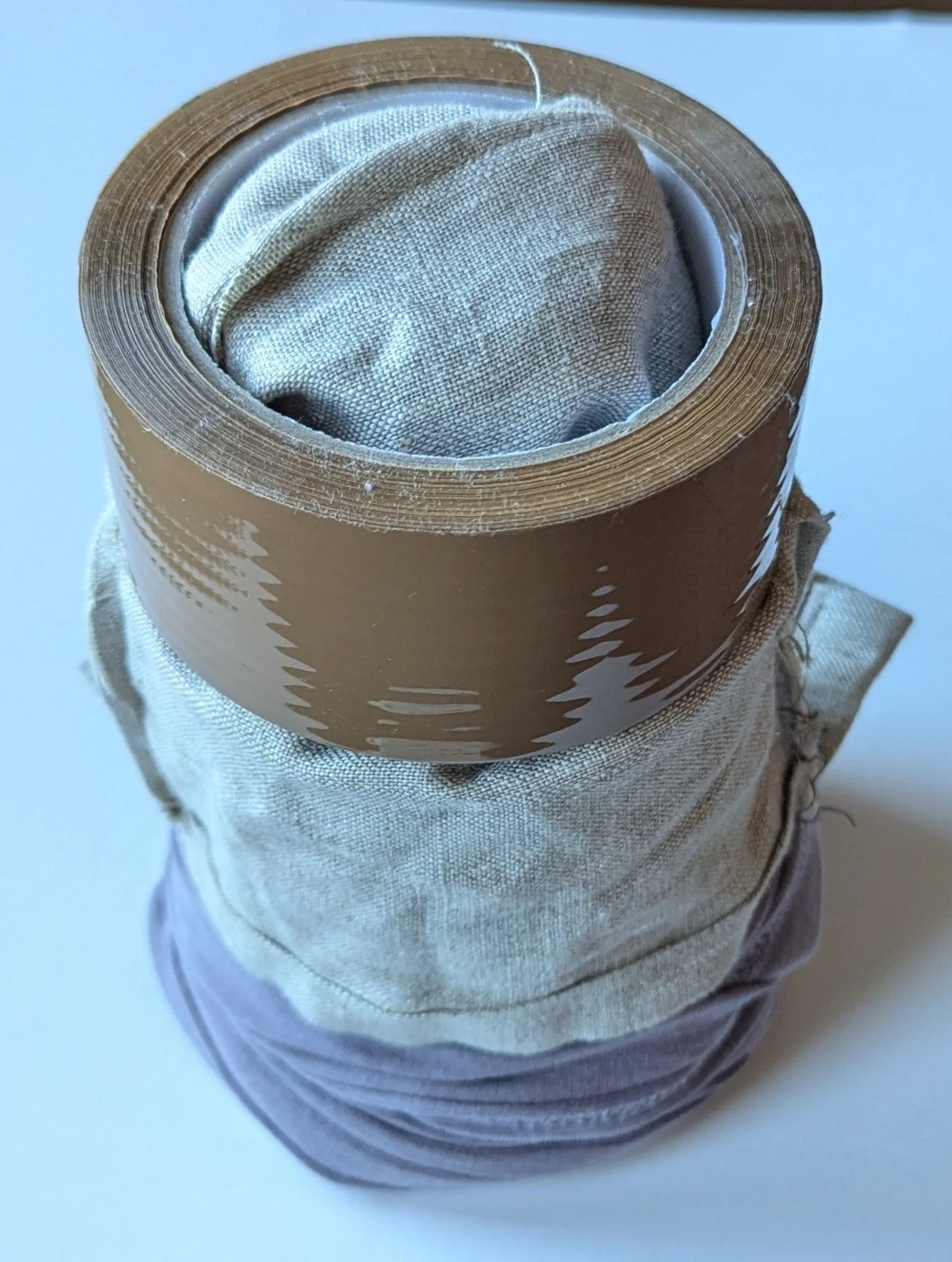resolved works, tests & works in progress
exhibited works
LIPSUM. beach towel, polyester stuffing, cardboard. 70 x 70 x 70 cm
Lipsum
This work was shown at a pop-up exhibition in Studio 27, Millbank Tower.
I like the inherent ‘placeholder’ quality of the cardboard here - I was asked several times what would be going in the pockets, eventually. Moving forward with my work I decided that the emptiness of the pockets (or cups or boxes or holes, whatever the feature) was important to me for the ambiguity afforded by that kind of purposeful empty space.
Something I identified in the making of Lipsum was the fact that once I have created the fabric ‘skin’ of an object, the act of stuffing it feels almost macabre, like I am creating some kind of taxidermy. Once it’s ‘complete’, though, it actually feels alive in some way. The bodily nature of the stuffed form is something I want to retain in further works, even as I incorporate more rigid, industrial components.
LIPSUM II. towels, polyester stuffing, glass-topped metal table. 50 x 50 x 100 cm
Lipsum ii
Incorporating the found table in this work generated some interesting lines of enquiry for me, which I explore further in my Critical Reflection. I showed Lipsum ii in two crits, with the glass table top present in the first and taken away for the second. Without the glass, it was seen as a more ambiguous and less utilitarian object.
Further notes on how the work was read can be found in my discussion of crits.
The combination of the bony legs of the table and the yielding softness of the object underneath creates a kind of tension that I want to push further into, but with more of a sense that we are looking at one homogenous structure.
smaller works, maquettes and WIPs
wool blanket, foam felting block. 23 x 23 x 8cm
Taking the simplest form of a cuboid, there is an act of transformation that occurs when you put a hole in it. When the hole doesn’t go all the way through to the other side it becomes form of containment. I built on an existing preoccupation with pockets in my work and came to see all these kinds of contained negative spaces as taking on the function of a pocket.
felt, cardboard phone box, masking tape. 15 x 9 x 6cm
An unfinished (benched) WIP in which I made a pattern for this carved foam work. This is a kind of pattern-making popular with amateur dressmakers who will often wrap their own bodies in cling film and tape, then cut it off to make 2D nets of their 3D form instead of draping on a tailors mannequin. This reflected a desire to create an upholstered skin for harder objects (i.e. not a stuffed object). My work since then has primarily focused on geometric shapes, which negates the need for this method of net-making for irregular shapes. It was, however, an interesting exercise in breaking down the relationship between the surface and form of an object.
This sketchbook page reflects my earlier thoughts, moving from Unit 1 into Unit 2. I had originally been seeing the works as empty frames, cloaked by custom-fit fabric pieces.
A later sketchbook page shows an evolution into thinking about singular objects that are both self contained and act as a potential container for foreign bodies.
plastic bowl, towel, polyester stuffing, PVA, cardboard. 20 x 20 x 6 cm
Lipsum was the first work I made using an old towel I had been given (friends and family know I’m always looking to take second hand fabrics off their hands) and since then towels have been my primary material. I now have a growing collection of towels either given to me or found in charity shops. I use small sections of them to create maquettes that explore the potential structure of larger works. These are a kind of blunt tool that help me to navigate ideas of internal space - in building larger works the minutia of the dimensions and features are born out of the process of making itself.
foam blocks, cardboard, masking tape, towel, polyester stuffing. 10 x 14 x 6 cm
pen on paper, 21 x 30cm
These drawings are much like the towel/cardboard maquettes - an isolation of my thoughts on composition and space relating to potential larger-scale work.
pen on paper, 21 x 30cm
In thinking ahead to a potential installation for the upcoming summer show, I was briefly considering using the corner of a room as a component. I liked the idea of using all three of the surfaces that the area would offer in order to stage more of an intervention on the space. Ultimately, the ability to walk 360 degrees around a work - to investigate it from all angles - felt like too important of a feature to lose.
pen on paper, 21 x 30cm
pencil on paper, 21 x 30cm
In looking to the MA show, the idea of a homogenised superstructure is emerging. One that is multipartite and yet singular, with a continuous surface that confuses the boundary between the object and the object’s space.
parcel tape roll, tea towel
parcel tape roll, tea towel, paint can
Most recently I have been using my own household objects to make small assemblages that consider the ways in which forms disparate in texture, density, hardness and recognisability can come together to form an integrated body.
1L paint tin, 0.1L paint tin, t-shirt fabric, linen bag, parcel tape roll. 14 x 26 cm

